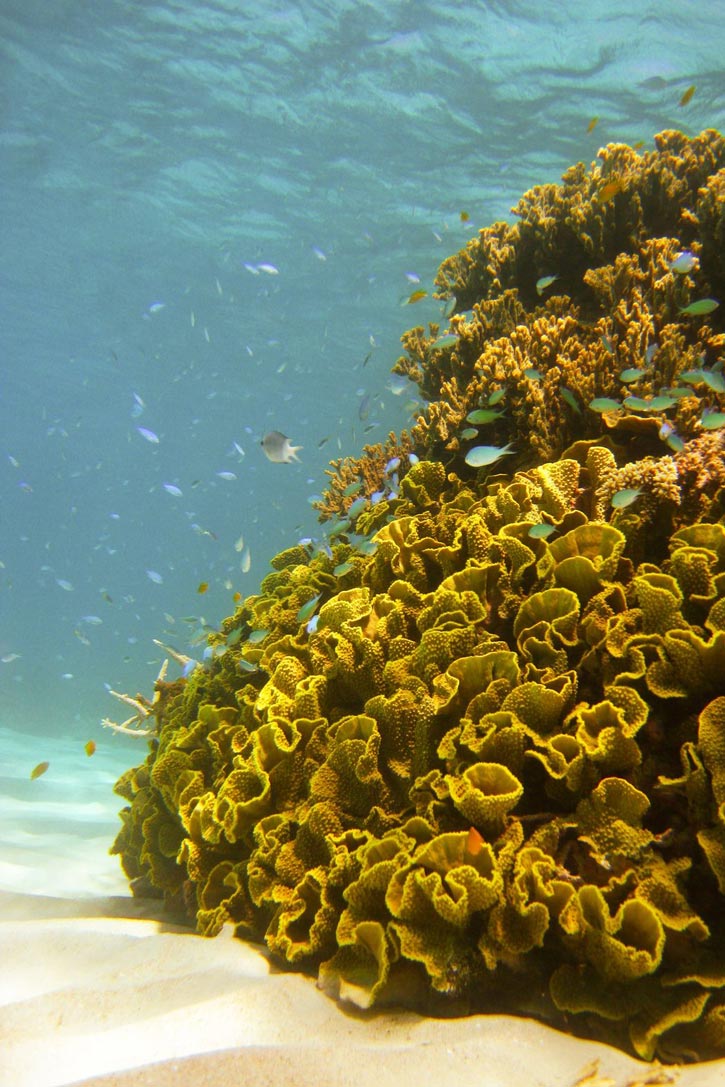Great Barrier Reef Facts and Figures .
TIME : 2016/2/16 13:38:55
The Great Barrier Reef is one of the most-visited, most talked about natural wonders of the world. While pictures of this beautiful place are worth a thousand words, experiencing it is worth a hundred thousand more, but even then it’s surprisingly easy to miss the true diversity of the reef and the impact is has on the global ecosystem. Here are some facts and figures about the Great Barrier Reef you probably didn’t know….
- The Great Barrier Reef (GBR) was listed as a UNESCO World Heritage site in 1981.
- Extending over some 2,000 kilometers and covering around 348,000 square kilometers, it is the world’s largest World Heritage property.
- The Great Barrier Reef Marine Park is larger than the entire area of the United Kingdom and Ireland combined.
- It is so large it can be seen from outer space.
- The GBR is the world’s biggest single structure made by living organisms, containing the world’s largest collection of coral reefs, with approximately 400 species of coral.
- The GBR is not one continuous reef, but around 2,900 individual reefs, 760 of which are fringing reefs along the mainland or around islands.
- The GBR is not “just” a reef; it also includes over 900 islands, all within the jurisdiction of Queensland, and about half have been declared national parks.
- There are some 32,000 described species of fish worldwide; 4,400 of those species are found in Australian waters, and 1,500 along the GBR alone.
- There are 4,000 types of mollusk, 1,500 species of sponges, and about 800 species of echinoderms (starfish, sea urchins).
- Then there are also around 125 species of shark, stingray, skates, or chimera, along with 17 species of sea snake.

Approximately 400 species of coral are found in the Great Barrier Reef. Photo © Paola Giannoni/123rf.
- The GBR is home to over 30 species of mammal, including the dugong, which is listed as vulnerable, and six of the world’s seven species of threatened marine turtle.
- The reef is a breeding area for humpback whales that come from the Antarctic to give birth in the warm waters.
- The islands and sand cays support around 215 bird species, many of which have breeding colonies there. Most nesting sites are on islands in the northern and southern regions of the GBR, with more than 1.5 million birds using the sites to breed.
- In addition to the fauna the reef supports, it is also home to 2,195 known plant species; three of these are found only on the Great Barrier Reef.
- The GBR is of great cultural importance and has been for some 50,000 years and more, containing many archaeological sites of Aboriginal or Torres Strait Islander origin, including fish traps, rock quarries, story sites, and rock art.
- The fishing industry throughout the reef is strictly controlled by the Queensland government, making sure the reef can sustain both human and fish life alike, with the industry being worth around $1 billion annually and employing approximately 2,000 people.
- Tourism is the region’s largest commercial activity; the Great Barrier Reef and associated activities generate over $4 billion annually.
- More than 1.6 million people visit the reef every year.
Excerpted from the First Edition of Moon Sydney & the Great Barrier Reef.
